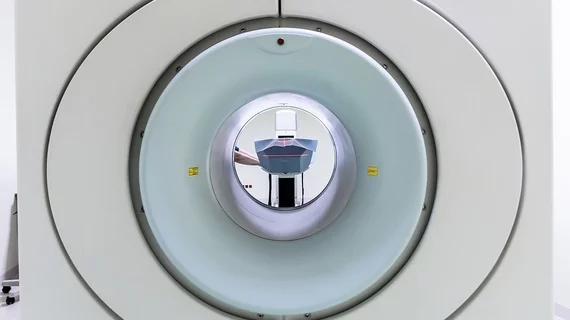New research is casting doubt on a controversial Centers for Medicare & Medicaid Services decision to restrict coverage for MR imaging among certain patients, experts wrote Wednesday.
It was a few years ago that the agency kept in place roadblocks to limit such exams for patients with abandoned leads for their cardiac implantable devices amid anxieties around safety. But a new analysis in JAMA Cardiology recorded no adverse events when imaging 139 patients with such concerns.
“In this study of patients with abandoned [cardiac implantable electronic device] leads undergoing MRI, including those who underwent MRI of the thorax, a low rate of arrhythmia, patient symptoms, or change in device settings was observed,” concluded Robert Schaller, DO, with the University of Pennsylvania medical school’s Division of Cardiovascular Medicine, and colleagues. “The growing aggregate of data calls into question current institutional and CMS reimbursement policies concerning MRI in patients with abandoned CIED leads,” they added.
The investigation included patients with at least one abandoned lead (243 total across all patients) who underwent 1.5-Tesla MR imaging between 2013-2020 at the Hospital of the University of Pennsylvania. Such pacing leads—whether capped, uncapped or fragmented—are no longer in electrical continuity with a pacemaker or defibrillator generator. Researchers monitored heart vitals through the process and maintained live contact with each individual via visual and voice connections.
Schaller and co-authors witnessed no abnormal vital signs or sustained arrythmias during the analysis. Nor did they see any changes in battery voltage, power-on reset events, or pacing. One patient with an abandoned subcutaneous array experienced sternal heating, but that subsided after prematurely stopping the exam.
In a corresponding editorial, cardiologist Robert Russo, MD, PhD, said this latest analysis is further proof that coverage should not be denied for clinically indicated MRI in this patient population.
“The present publication by Schaller and colleagues represents an important contribution to the literature that addresses MRI with abandoned pacing leads, the last remaining obstacle to the performance and CMS coverage for MRI in patients with an implanted cardiac device,” wrote Russo, with the Scripps Research Institute in La Jolla, California. “It is hoped that future registry data will be sufficiently compelling to prompt CMS to further modify the [National Coverage Determination] and to remove the coverage restriction for patients with an abandoned lead undergoing MRI with or without a pacemaker or defibrillator generator.”

